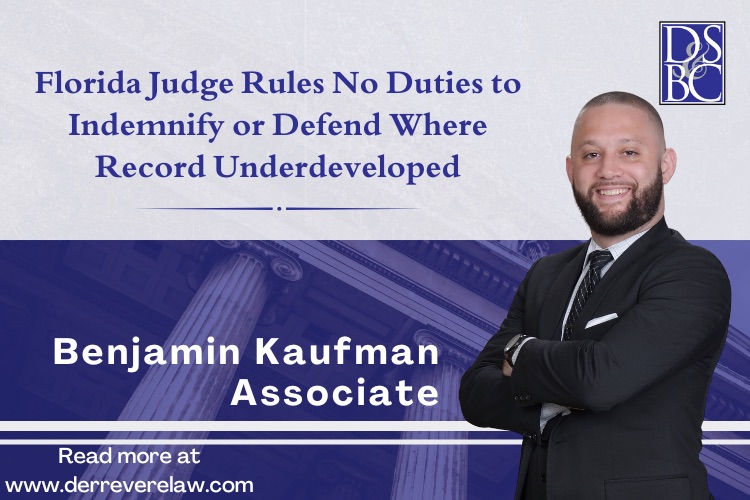Learning to Love Massachusetts Superior Court Rule 9A (Pt. II – Summary Judgment)

So, here we are, back again. As discussed in the prior blog post, Massachusetts Superior Court Rule 9A is often the bane of many attorneys due to its length, complexity, and specificity. This blog post pertains specifically to filing/serving Summary Judgment Motions in the Superior Court. If you are looking for tips for filing/serving regular motions under Superior Court Rule 9A please refer to the prior post.
A few caveats as mentioned previously: (1) do yourself a favor and download the PDF if you have not reviewed the rule before, it is far easier to read…at least for me; (2) make sure you check the rules often—Rule 9A is one of the more frequently updated rules, do not get your motion rejected because you failed to comply with a new requirement or update.
Step 1: Confer With Opposing Counsel.
-
- Per Superior Court Rule 9A & Superior Court Rule 9C, parties are required to confer in advance of filing a Summary Judgment Motion. This means you have to have a chat with opposing counsel (yes…all of them) and “make a good faith effort to narrow areas of disagreement to the fullest extent.”
- What this actually means, who knows? I will typically give opposing counsel a call and see if they will assent and/or whether they would oppose the motion (this is usually good for a laugh). Since we are talking about summary judgment here, I can’t imagine many circumstances in which opposing counsel would assent or not oppose your summary judgment motion.
- Make sure to note the date and time of the call, you will need this for your Affidavit of Compliance later. Also, while the rule says to do this in advance of “filing” any motion, I think generally it is more cordial to do it before serving the motion on the adverse party.
Step 2: Draft your Motion, Memorandum, Statement of Facts, and Joint Appendix.
-
- As I said before regarding the Motion and Memorandum, yes you need both. Per Superior Court Rule 9A(1) you need both a Motion and then a separate Memorandum of Law stating the reasons why said Motion should be granted.
- Statement of Facts (what the heck is this?)
- This needs to be another separate document
- It cannot exceed 20 pages
- These are facts that the moving party is alleging are undisputed
- These need to be numbered, and typically will reference some evidence that proves up what would otherwise be an allegation, for example: X drove his car into the house owned by Y (see Exhibit A, Deposition Transcript of X admitting to the same).
- Joint Appendix
- This is just a list (A through X, Y, Z) of the evidence that is being referenced in the statement of facts/memorandum. So include each piece of evidence, assign it a letter, and include this list (titled as Joint Appendix) with your motion papers.
Step 3: Serve your Motion, Memorandum, Statement of Facts, Joint Appendix, and Certificate of Service.
-
- When you send your Motion and Memorandum to opposing counsel, be sure to include a Certificate of Service—you will need this later for the 9A Package. Per 9A(b)(1)(iii), Electronic Service, which is my preferred method, is permitted. Make sure to include in said Certificate of Service “served via email” so that scanned signatures can be accepted by the Court.
- Statement of Facts
- This needs to also be served in Rich Text Format…again what in the world is that?? This means, serving it in an email in an editable format, I typically go with Microsoft Word…it is just the easiest and a program 99% of lawyers will have.
- The reason you are serving an editable document on opposing counsel is that opposing counsel will need to respond to each of the listed assertions in the Statement of Fact, either admitting or refuting them with some other evidence.
- Don’t forget to send your Joint Appendix
- I typically send this in Word format so opposing counsel can add their exhibits and thereby make it a (you guessed it) JOINT appendix.
Step 4: Waiting Time (give it 24 days).
-
- Unlike regular motions, the non-moving party has 21 days to respond. I typically give 24 days, since per Superior Court Rule 9A, if a pleading is served by mail, you must wait an additional three (3) days. I always give it an additional three (3) days to avoid any issues.
Step 5: What are you getting back?
-
- Opposition – if opposing counsel opposes your Motion for Summary Judgment, you will get one of these back.
- Statement of Facts – with the other side’s counters to your assertions.
- Joint Appendix – with the other side’s evidence for their opposition.
Step 6: Reply or Compile your 9A package.
-
- Per 9A, the moving party has the option to draft a reply (not to exceed 5 pages): “limited to matters raised in the opposition that was not and could not reasonably have been anticipated and addressed in the moving party’s initial memorandum.”
- TIP: Don’t file a reply just to file a reply; file one to address new topics and points. Courts/judges often do not like replies that add nothing or simply rehash things already stated in the memorandum.
- If no reply, then get ready for the fun of compiling a 9A package.
Step 7: What to file once you have all the goodies.
-
- Here is a breakdown of how I organize my Summary Judgment 9A Package. I list all these items (typically in this order) in a letter when I send it to the court for filing:
- 9A Affidavit of Compliance – this states all the lovely things you did to comply with 9A, dates of service, 9C conference, etc.;
- 9A Notice of Filing – this will list all the items you are filing in the package;
- Joint Appendix of Exhibits;
- Joint Exhibits – just include all the exhibits together (in order, obviously);
- Consolidated Statement of Material Facts – this is the combined version of your Statement of Facts and the responses to said facts from opposing counsel;
- Moving Party’s Motion for Summary Judgment;
- Moving Party’s Memorandum of Law in Support of the Motion for Summary Judgment;
- Non-Moving Party’s Opposition;
- Reply (if applicable);
- Request for Hearing (sometimes per the rules, since this is a dispositive motion, a hearing will be scheduled automatically. But, I always ask for what I want and you should too!!);
- Certificate of Service – for your originally served documents (see Step 3);
- Certificate of Service – NEW Certificate of Service with 1) Consolidated Statement of Facts; Joint Appendix; Reply (if applicable); Request for Hearing (if applicable).
- Here is a breakdown of how I organize my Summary Judgment 9A Package. I list all these items (typically in this order) in a letter when I send it to the court for filing:
YEEESH! Ok, well…there is the even more wild breakdown of 9A for Motions for Summary Judgment. It is complicated and a bit confusing, but if you break it down into steps and take your time, you will get there.




